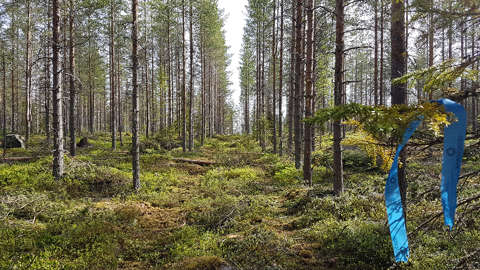Rapid Method for Genetic Analyses

The selection of candidates for breeding and seed orchards requires extensive phenotypic data for many traits. Breeding goal traits, such as area production per hectare, are often difficult to use directly in selection. Instead, several correlated selection traits are used as indicators for the desired breeding goal. Breeding programs for forest trees face challenges in including additional traits in evaluation systems beyond those used today, to meet future climate changes in forestry and to ensure the quality of raw materials. New measurement methods may therefore be implemented, generating large amounts of data.
Multivariate analysis is used as a standard method in breeding programs to combine information from different traits and simultaneously improve the prediction of breeding values. When genetic analyses include multiple traits and large amounts of data, it often becomes complicated – both because it takes a long time and because it is difficult to obtain clear results, or worse, it becomes impossible to analyze all the data. With the technique of principal component analysis (PCA), this can be done more efficiently by using trait profiles instead of many separate traits. These trait profiles are independent of each other and can therefore be analyzed individually.
Two forest genetic datasets were compared – one from a field trial with Scots pine (Pinus sylvestris) in northern Sweden and another from a breeding population of loblolly pine (Pinus taeda) in North America with several trial sites – with 22 and 27 traits respectively. Production and quality traits analyzed in Scots pine included stem diameter, number of terminal shoots, number of branches per whorl, branch diameter and angle, tree height, and number of annual shoots. The following traits related to production, quality, or disease susceptibility were analyzed in loblolly pine: crown width, tree height, branch angle and diameter, height of the live crown base, number of roots, presence or absence of roots, susceptibility to fusiform rust and its presence or absence, content of 5- and 6-carbon sugars, wood density, proportion of latewood in year four, and lignin content.
This work demonstrates a useful concept for the development of Skogforsk’s genetic analyses, which are required for selecting candidates for breeding populations and seed orchards. Considering the need to select more adaptive genotypes for future climates while maintaining wood quality, selection criteria are expected to increase compared to current standards. PCA can be a viable alternative in genetic analysis procedures as a fast and accurate tool in connection with selection from large-scale phenotypic data collections.
All code and libraries used in the study are publicly available. This means the method can be used in any statistical software that supports PCA and quantitative genetic models.
We will review and publish your comment as soon as possible.




